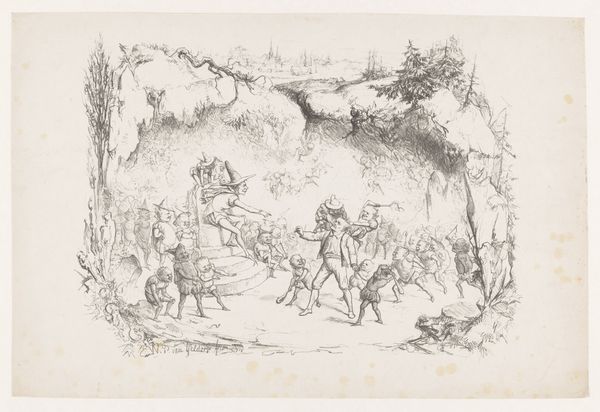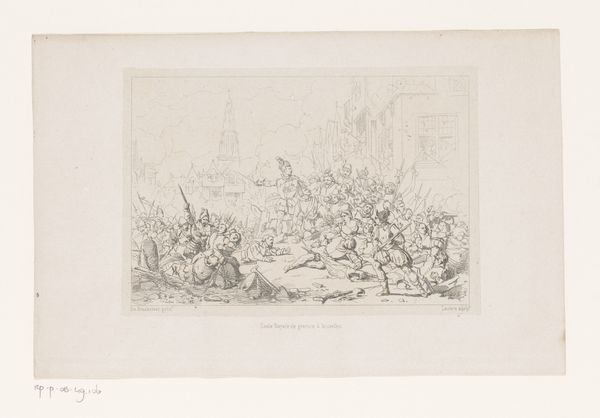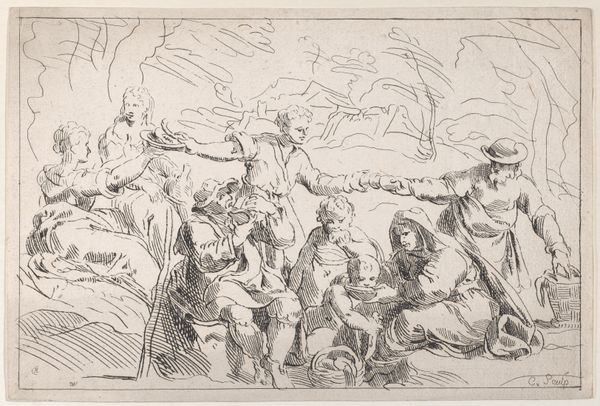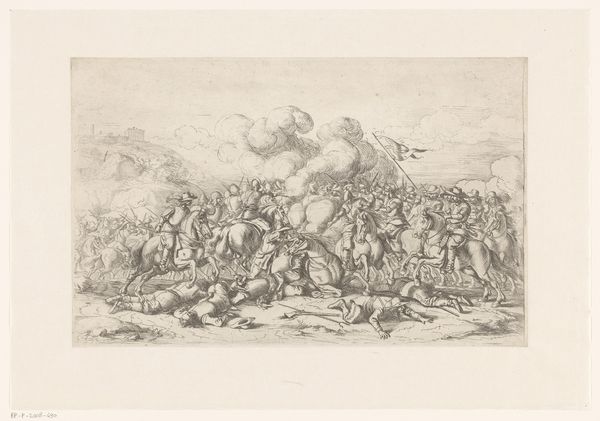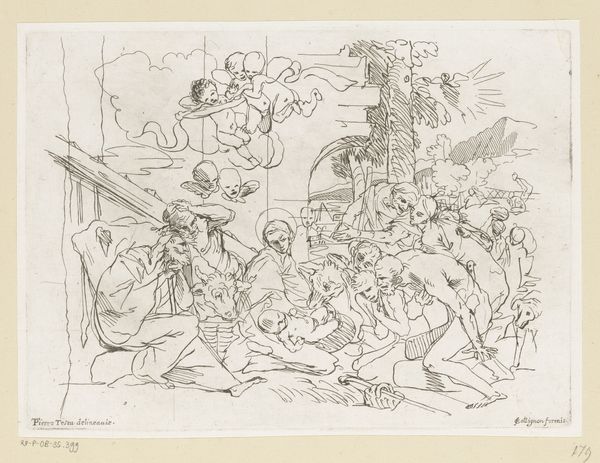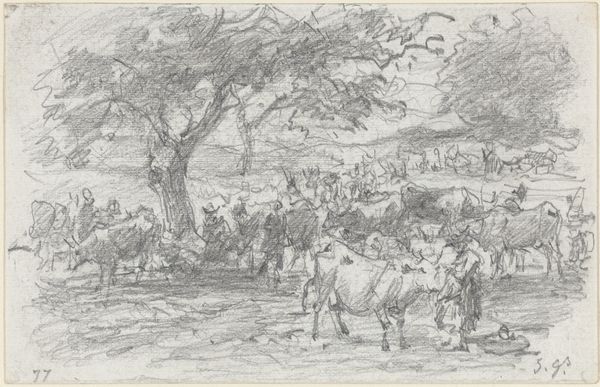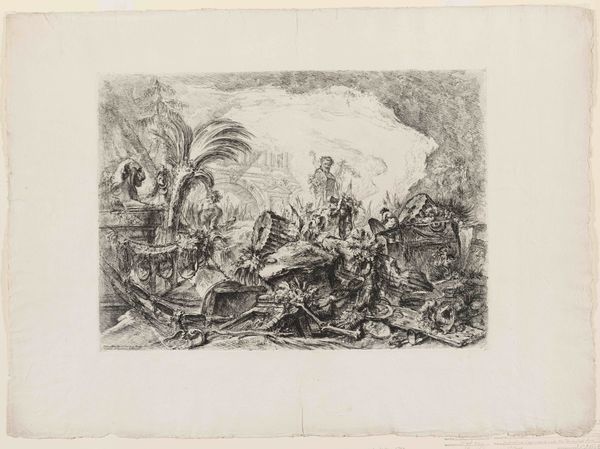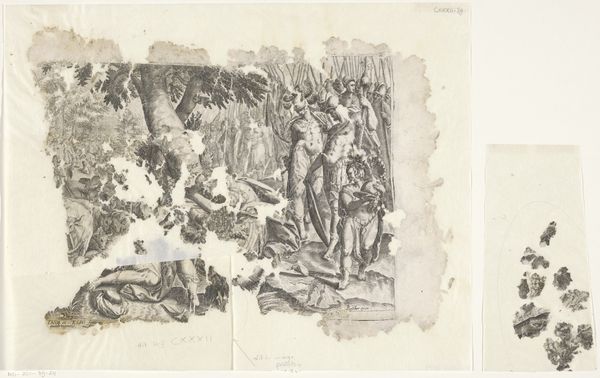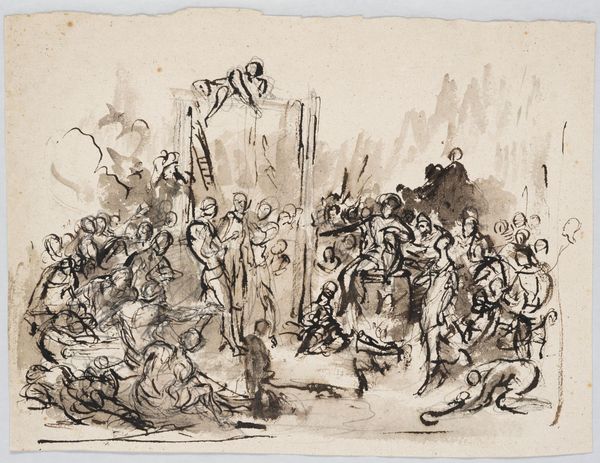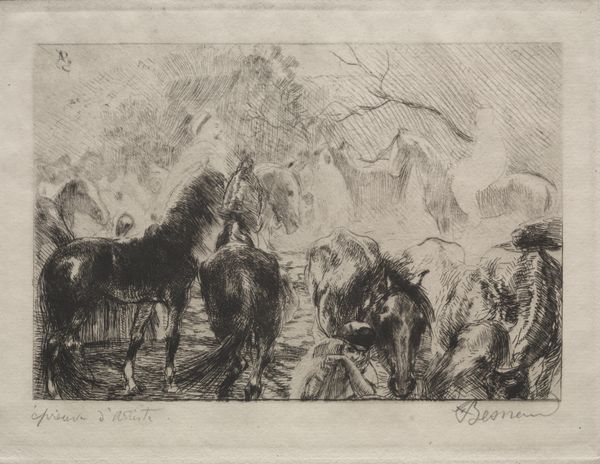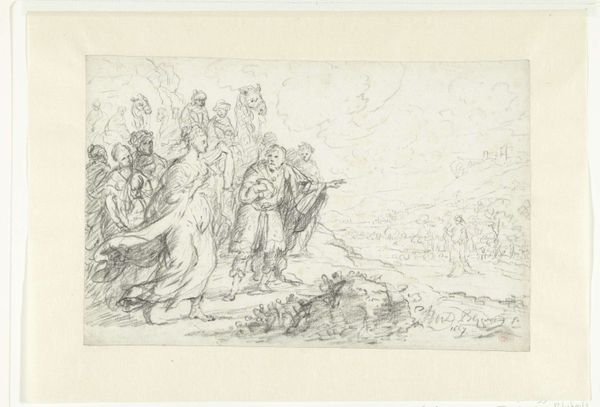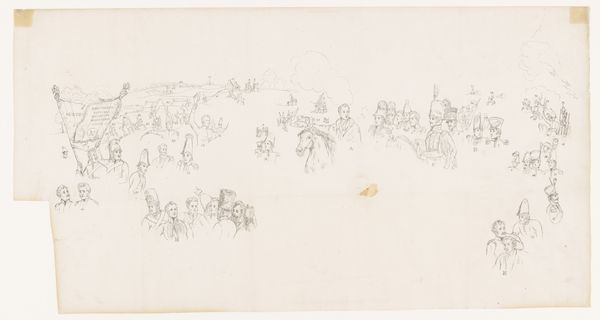
Dimensions: height 360 mm, width 545 mm
Copyright: Rijks Museum: Open Domain
Editor: This is Wilhelmus Petrus van Geldorp’s pen and ink drawing, "Gabriël Grub kijkt naar een trieste scène met een stervende," from 1872. The scene is incredibly detailed; a whole world is packed onto the page. What catches your eye in this work? Curator: What strikes me is the raw materiality of it. It’s just pen scratching on paper, the bare minimum, yet it constructs this elaborate fantasy. Geldorp is using very simple, accessible materials. I wonder what commentary he is making by representing what appears to be the death of a protagonist within an economy of humble tools and supplies? Editor: That’s interesting! So you see the humbleness of the medium – pen and ink – as significant in relation to this grand scene of loss and fantasy? Curator: Absolutely. The process of drawing itself – the repetitive, almost meditative act of hatching and cross-hatching to build up form and shadow - that laborious method stands in stark contrast to the dramatic subject matter. The physical labor of creating this fantastical image contrasts sharply with what seems to be a focus on "high art". Do you think this affects our understanding of the social class or economic status of the depicted players and witnesses? Editor: I hadn't thought about it that way. The level of detail suggests skilled labor, but the cheapness of the supplies makes the creation accessible. Maybe the artist aimed to bring epic fantasy down to earth? Curator: Exactly! We see art making more accessible when art moves away from what constitutes traditionally higher and more lavish artistic resources. Editor: This conversation really highlighted how an artist’s choice of even simple materials impacts the overall meaning and interpretation. Curator: Precisely. It urges us to consider how meaning is produced, not just within the image, but through the physical act and economy of its making.
Comments
No comments
Be the first to comment and join the conversation on the ultimate creative platform.
